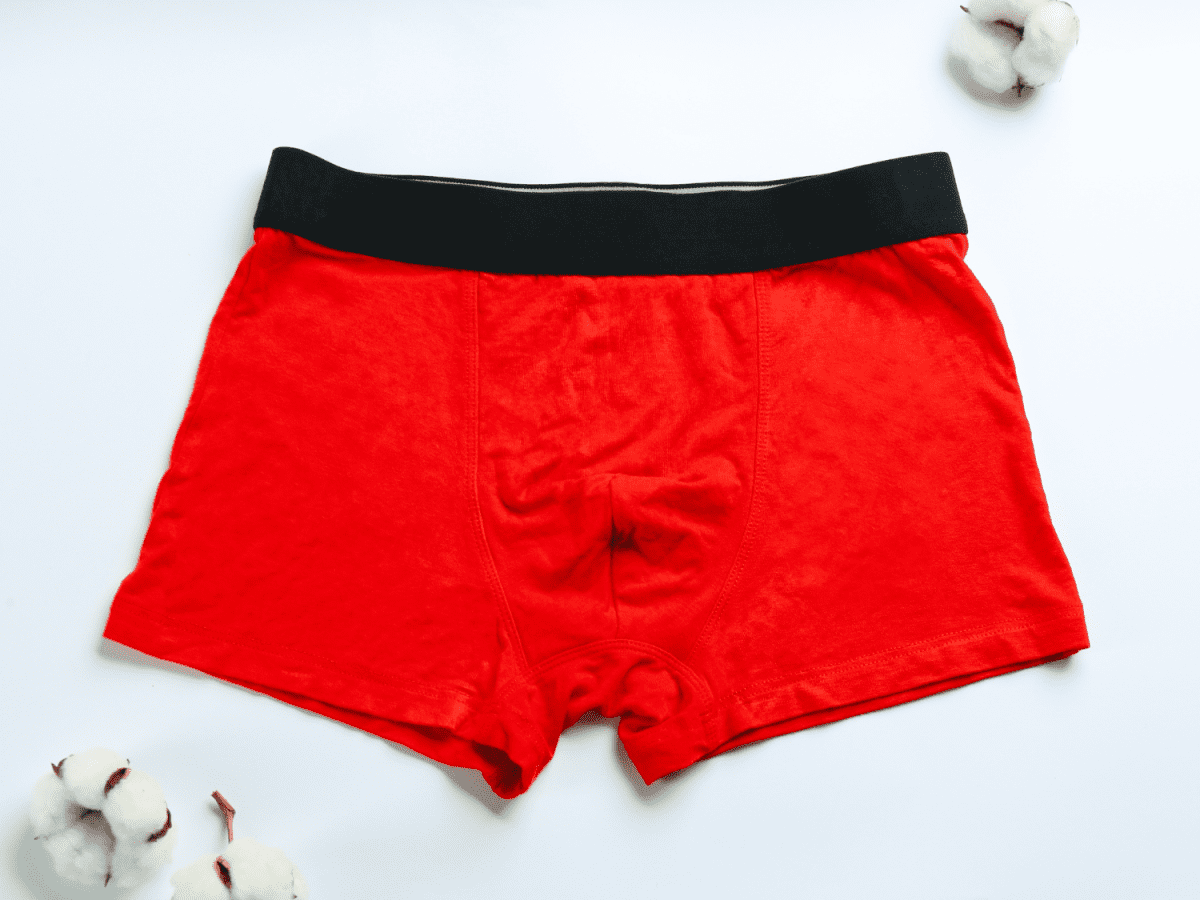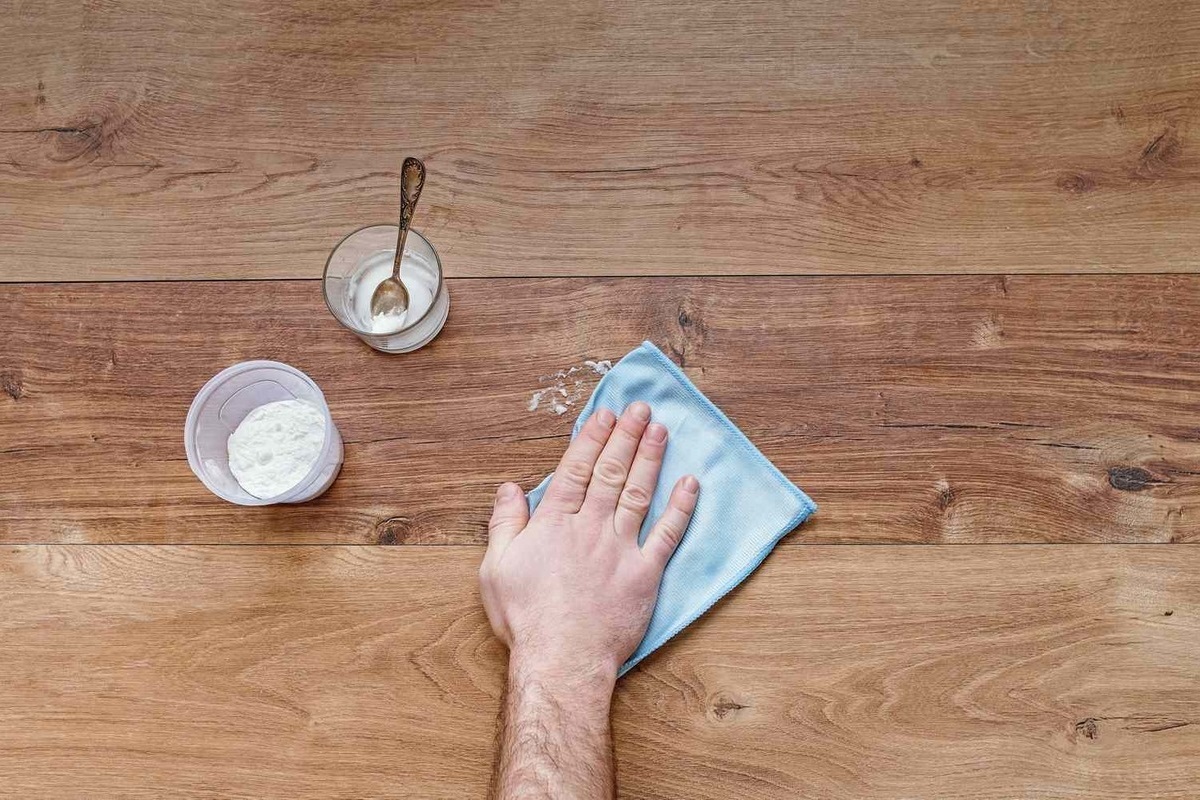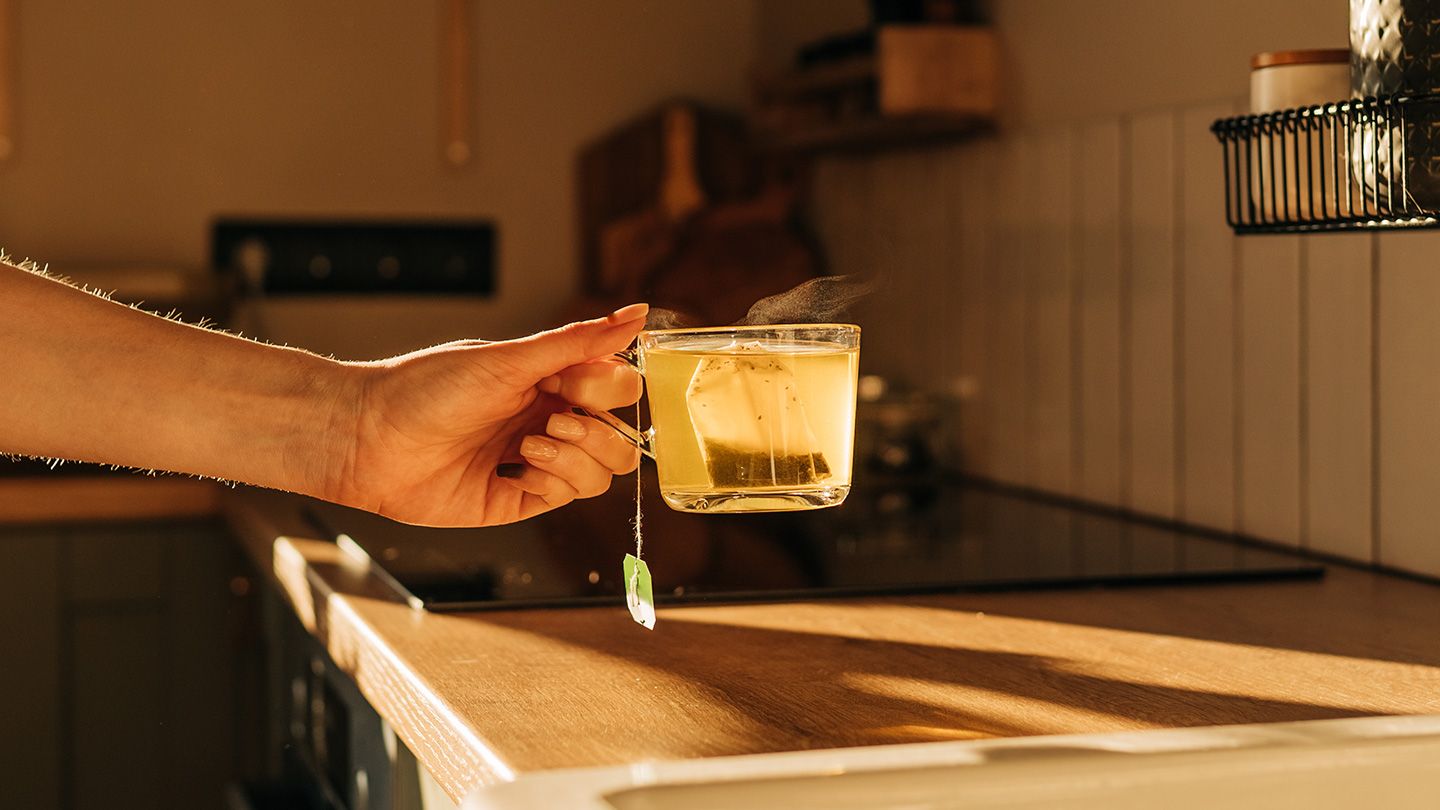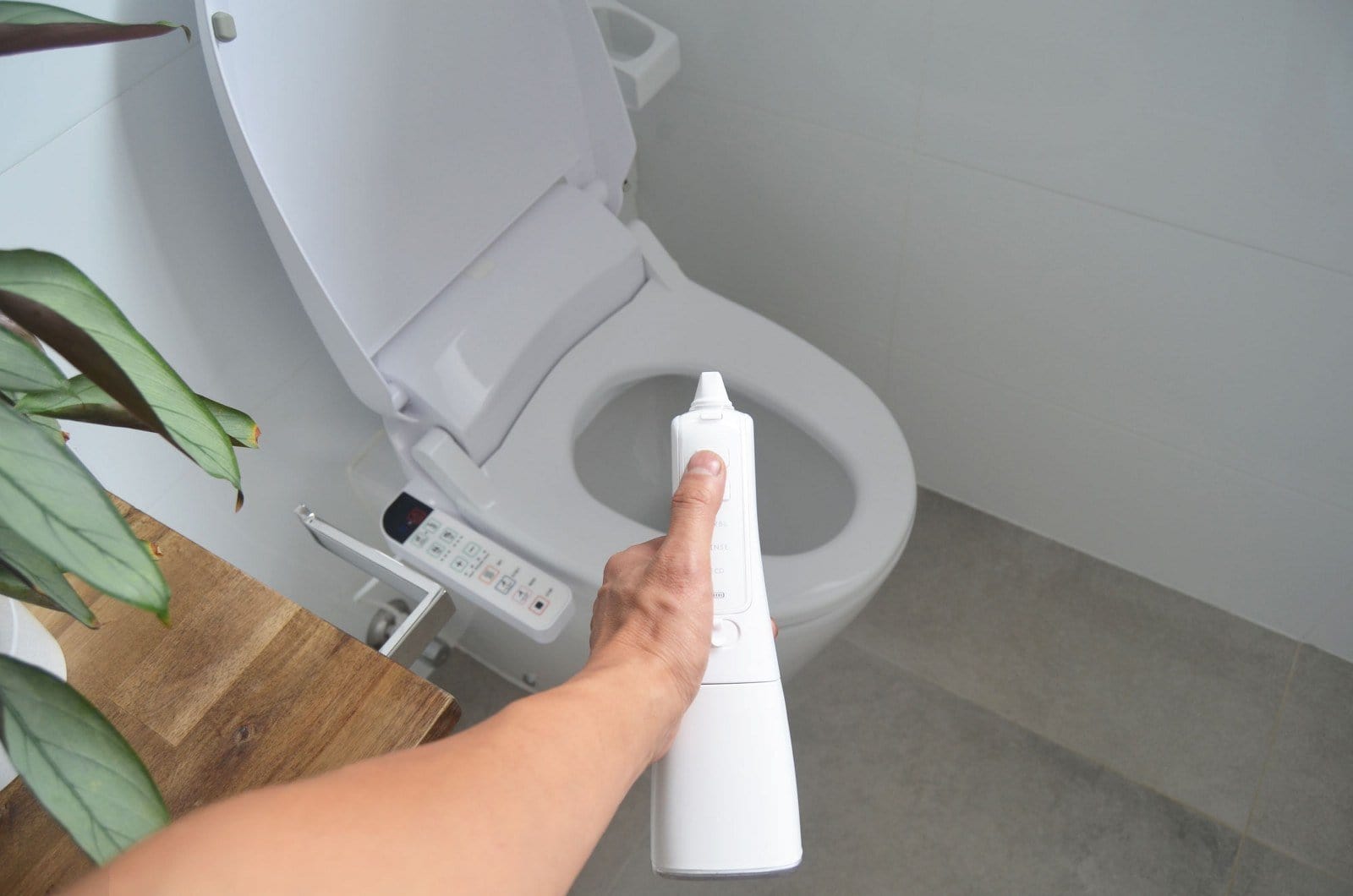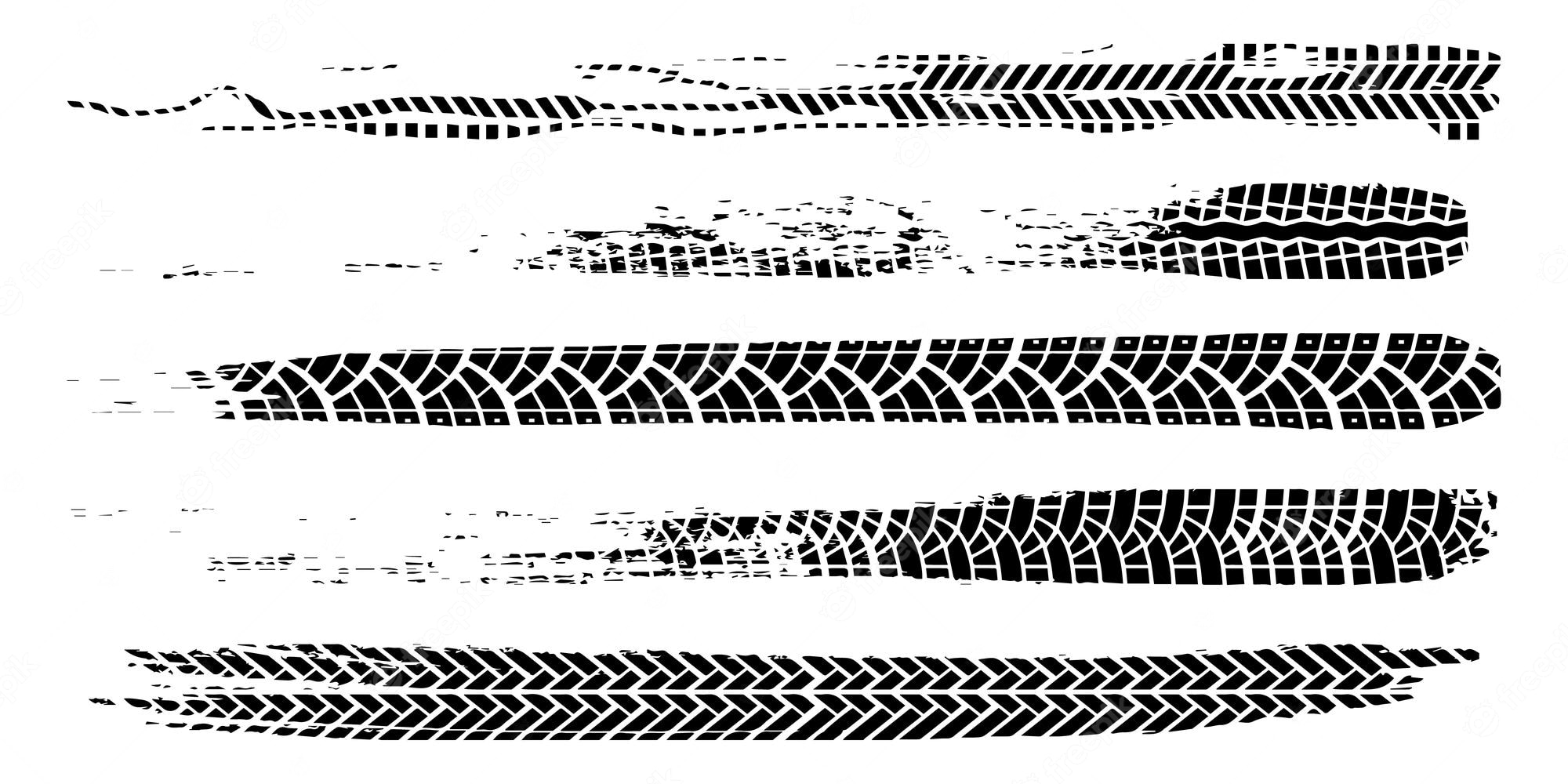Home>How-to Guides>For All>How To Get Rid Of Wall Skid Marks
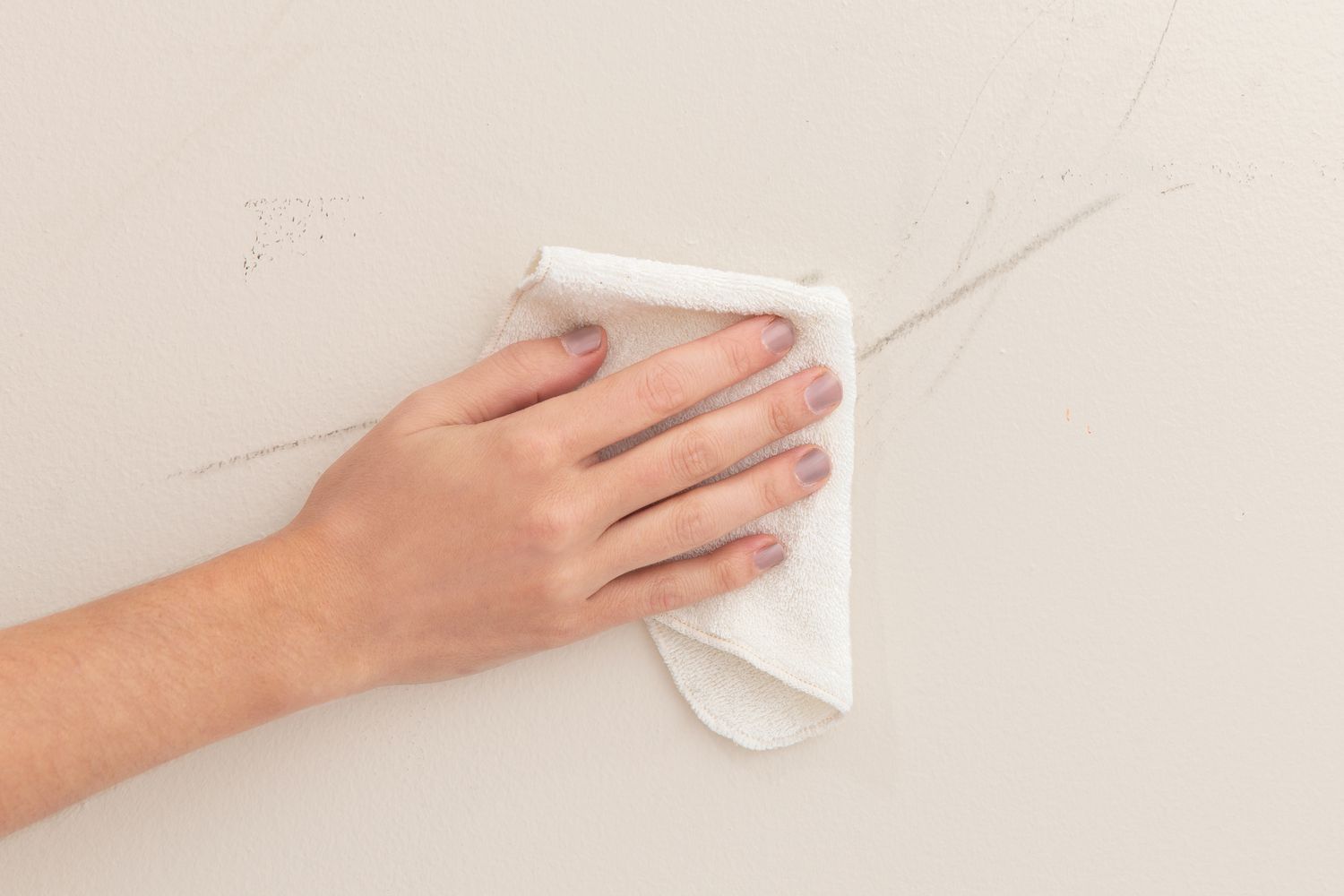

For All
How To Get Rid Of Wall Skid Marks
Modified: August 2, 2023
Discover effective tips and tricks for removing wall skid marks for all types of surfaces. Say goodbye to unsightly marks on your walls with our expert solutions.
(Many of the links in this article redirect to a specific reviewed product. Your purchase of these products through affiliate links helps to generate commission for Under-tec.com, at no extra cost. Learn more)
Table of Contents
- How to Get Rid of Wall Skid Marks
- Introduction
- Understanding Wall Skid Marks
- Preparing for Wall Skid Mark Removal
- Mild Cleaning Solutions for Wall Skid Marks
- Moderate Cleaning Solutions for Wall Skid Marks
- Strong Cleaning Solutions for Stubborn Wall Skid Marks
- Tips and Tricks for Preventing Wall Skid Marks
- Conclusion
How to Get Rid of Wall Skid Marks
Wall skid marks can be unsightly and frustrating to deal with. Whether caused by furniture, shoes, or other objects rubbing against the wall, these marks can make your walls look dirty and unkempt. Fortunately, there are several effective methods you can use to remove skid marks from your walls and restore their pristine appearance. In this section, we will explore different approaches to tackle wall skid marks, ranging from mild to strong cleaning solutions.
Mild Cleaning Solutions for Wall Skid Marks
If the skid marks on your walls are still relatively fresh, you may be able to remove them with mild cleaning solutions. Start by mixing a small amount of dish soap with warm water in a bucket. Dip a sponge or soft cloth into the solution and gently scrub the affected area using circular motions. Rinse the sponge or cloth frequently and continue until the skid marks are completely gone. Remember to test the solution on a small, inconspicuous area of the wall first to ensure it doesn’t cause any damage.
Moderate Cleaning Solutions for Wall Skid Marks
If the skid marks are more stubborn and require a stronger cleaning solution, you can try using a mixture of baking soda and water. Create a paste-like consistency by combining equal parts of baking soda and water. Apply the paste to the skid marks and use a soft-bristled brush or sponge to gently scrub the area. Let the paste sit on the wall for a few minutes before rinsing it off with water. This method can help lift and remove tougher skid marks without causing damage to the paint or wallpaper.
Strong Cleaning Solutions for Stubborn Wall Skid Marks
If the skid marks are particularly stubborn and neither the mild nor moderate solutions worked, you may need to resort to stronger cleaning solutions. One option is to use a non-abrasive household cleaner or a magic eraser. Apply the cleaner or dampen the eraser and gently scrub the skid marks. Be cautious not to scrub too hard to avoid damaging the wall’s surface. Rinse the area thoroughly with water and wipe it dry.
Tips and Tricks for Preventing Wall Skid Marks
Prevention is always better than dealing with skid marks on your walls. To minimize the occurrence of skid marks, consider placing protective pads or bumpers on the furniture or objects that frequently come into contact with the walls. You can also encourage family members and guests to remove their shoes when indoors to reduce the chances of wall scuffs.
By following these cleaning and prevention tips, you can effectively remove and prevent wall skid marks, keeping your walls looking clean and pristine. Remember to always test cleaning solutions on a small, inconspicuous area first and be gentle when scrubbing to avoid damaging the paint or wallpaper.
Introduction
Wall skid marks are marks left on the walls when objects rub against them. These marks can be caused by furniture, shoes, or other items that come into contact with the walls. Not only are wall skid marks unsightly, but they can also make your walls appear dirty and unkept. If left untreated, they can become more difficult to remove over time.
In this article, we will explore effective methods to get rid of wall skid marks and restore your walls to their original condition. From mild cleaning solutions for fresh skid marks to stronger cleaning methods for stubborn stains, we will cover a range of techniques that can help you remove skid marks effectively and efficiently.
We will also provide tips and tricks for preventing wall skid marks in the first place. By implementing these preventative measures, you can minimize the occurrence of skid marks and maintain the cleanliness of your walls in the long run.
It’s important to note that before attempting any cleaning methods, it’s always a good idea to test the solution on a small, inconspicuous area of the wall to ensure it doesn’t cause any damage. Additionally, be mindful of the surface you are cleaning – different types of paint or wallpaper may require specific cleaning methods.
Now, let’s dive into the various techniques you can use to remove wall skid marks and keep your walls looking fresh and clean. Whether you’re dealing with fresh skid marks or stubborn stains, we’ve got you covered with effective solutions that will have your walls looking as good as new in no time!
Understanding Wall Skid Marks
Wall skid marks are an unfortunate occurrence that can happen to any wall surface. They are typically caused by objects coming into contact with the walls, such as furniture being moved, shoes scuffing against the wall, or even accidental bumps and scratches. These marks can leave behind unsightly streaks or smudges that can diminish the overall appearance of your walls.
It’s important to understand that different wall materials can react differently to skid marks. Painted walls, for example, may be more prone to visible marks, while wallpapers may be more forgiving due to their patterns and textures. Regardless of the type of wall surface you have, it’s essential to address skid marks promptly to prevent further damage and maintain the aesthetics of your space.
When it comes to treating wall skid marks, the first step is determining the severity of the mark and the type of wall material you are dealing with. Fresh skid marks are often easier to remove, as they haven’t had time to set in. On the other hand, older or more stubborn skid marks may require stronger cleaning methods to effectively remove them.
Before attempting any cleaning methods, it’s important to gather the necessary supplies. Depending on the severity of the skid marks, you may need mild cleaning solutions such as dish soap and warm water, or stronger cleaning solutions such as baking soda paste or non-abrasive household cleaners. Having the appropriate tools, such as sponges, soft cloths, and brushes, is also essential for a successful cleaning process.
Keep in mind that not all cleaning methods are suitable for all wall surfaces. Testing a small, inconspicuous area of the wall before proceeding with any cleaning method is crucial to ensure that the solution or technique does not cause damage or discoloration to your walls.
In the next sections, we will explore different methods to remove wall skid marks, starting with mild cleaning solutions for fresh marks and gradually progressing to stronger solutions for more stubborn stains. By understanding the nature of skid marks and the proper techniques to address them, you’ll be better equipped to restore the beauty of your walls and maintain a clean and appealing living space.
Preparing for Wall Skid Mark Removal
Before you begin the process of removing skid marks from your walls, it’s important to take some preparatory steps to ensure a successful and efficient cleaning process. By properly preparing the area and gathering the necessary supplies, you can effectively tackle the task at hand and achieve the best results.
The first step is to clear the area surrounding the skid marks. Remove any furniture or objects that may obstruct your access to the marked area. This will give you a clear workspace and prevent any accidental damage to nearby items during the cleaning process.
Next, gather your cleaning supplies. Depending on the severity of the skid marks, you may need mild cleaning solutions or stronger cleaning agents. Common mild solutions include dish soap and warm water. Stronger solutions can involve using baking soda paste or non-abrasive household cleaners. Additionally, gather tools such as sponges, soft cloths, or brushes that are appropriate for the surface you are cleaning.
Before applying any cleaning solution or technique to the skid marks, it’s important to test it on a small, inconspicuous area of the wall. This will prevent any potential damage or discoloration to your walls. Apply a small amount of the cleaning solution and observe its effect on the wall surface. If there is no adverse reaction, you can proceed with confidence knowing that the solution is safe for use.
For painted walls, it’s important to note the specific type of paint used. Different paint finishes may require different cleaning methods. For example, flat or matte paint may be more susceptible to damage from aggressive cleaning. In contrast, semi-gloss or gloss paint may be more resistant to stains and easier to clean. Understanding the characteristics of your paint will help guide your cleaning approach.
If your walls are covered with wallpaper, it’s vital to consider the material and pattern of the wallpaper. Delicate or textured wallpapers may require more gentle cleaning solutions and techniques to avoid damage. Additionally, some wallpapers may be more forgiving in hiding slight marks, while others may highlight them. Being aware of your wallpaper’s specific requirements will ensure a successful cleaning process.
By taking the time to prepare the area, gather the appropriate supplies, and test your cleaning solutions, you can set the stage for effective wall skid mark removal. This careful preparation will help you achieve optimal results while protecting the integrity and appearance of your walls. With the preparation complete, you’re now ready to delve into the specific cleaning solutions and techniques for removing wall skid marks.
Mild Cleaning Solutions for Wall Skid Marks
If the skid marks on your walls are relatively fresh or not too severe, you can start by using mild cleaning solutions to remove them. These solutions are often gentle enough to lift the marks without causing any damage to the wall surface. Here are a few effective mild cleaning methods:
1. Dish Soap and Warm Water: Mix a small amount of dish soap with warm water in a bucket. Dip a sponge or soft cloth into the solution and gently scrub the skid marks using circular motions. Rinse the sponge or cloth frequently and continue until the marks are completely gone. This method is safe for most painted walls and wallpapers. However, it’s always a good idea to test the solution on a small, inconspicuous area first to ensure it doesn’t cause any damage.
2. Vinegar Solution: Create a cleaning solution by mixing equal parts of water and white vinegar in a spray bottle. Lightly spray the solution onto the skid marks and let it sit for a few minutes to break down the residue. Then, use a sponge or cloth to gently scrub the marks. Rinse the area with water and wipe it dry. Vinegar is effective in removing mild skid marks and is safe to use on most wall surfaces, but it’s always best to test it first.
3. Eraser Sponge: Eraser sponges, also known as magic erasers, can effectively remove skid marks without the need for additional cleaning solutions. Simply dampen the eraser sponge and gently rub it over the marks. The abrasive texture of the sponge helps lift the marks away. Be careful not to scrub too hard to avoid damaging the paint or wallpaper. Rinse the area with water and wipe it dry.
4. Baking Soda Paste: Create a paste by mixing baking soda with a small amount of water. Apply the paste to the skid marks and gently scrub the area with a soft-bristled brush or sponge. Let the paste sit on the wall for a few minutes to allow the baking soda to work its magic. Rinse the area with water and wipe it dry. This method is particularly effective for removing mild to moderate skid marks and is safe for most painted walls and wallpapers.
Remember to always work in small sections and be gentle when scrubbing. Rinse the cleaned area with water and wipe it dry after removing the skid marks. This will prevent any residue or cleaning solution from drying and leaving behind unwanted marks or streaks.
By utilizing these mild cleaning solutions, you can effectively remove fresh or mild skid marks from your walls. Whether you choose to use dish soap, vinegar, eraser sponges, or baking soda paste, it’s important to proceed with caution and test the method on a small area first. With the mild cleaning solutions complete, we will now move on to discussing moderate cleaning solutions for more stubborn wall skid marks.
Moderate Cleaning Solutions for Wall Skid Marks
If mild cleaning solutions didn’t completely remove the skid marks on your walls or if you’re dealing with more stubborn stains, it’s time to turn to moderate cleaning solutions. These methods are slightly stronger and can effectively tackle tougher skid marks without causing damage to most wall surfaces. Here are a few effective moderate cleaning solutions:
1. Baking Soda Paste: As mentioned earlier, baking soda is a versatile cleaning agent. For more stubborn skid marks, create a paste by mixing baking soda with water to form a thick consistency. Apply the paste to the marks and gently scrub the area using a soft-bristled brush or sponge. The baking soda’s abrasive properties help lift away tougher stains. Let the paste sit on the wall for a few minutes before rinsing it off with water. Repeat the process if necessary.
2. Rubbing Alcohol: Another effective solution for more stubborn skid marks is rubbing alcohol. Dampen a soft cloth or sponge with rubbing alcohol and gently rub the marks in circular motions. The alcohol helps dissolve and lift away the stains. Once the marks are removed, rinse the area with water and wipe it dry. Rubbing alcohol is safe to use on most wall surfaces, but it’s always best to test it on a small, inconspicuous area first.
3. Commercial Wall Cleaner: If the skid marks persist, you can try using a mild, non-abrasive commercial wall cleaner. Follow the manufacturer’s instructions for dilution and application. Apply the cleaner to a soft cloth or sponge and gently scrub the marks. Rinse the area with water and wipe it dry. Always read the labels and follow the guidelines to ensure the cleaner is safe to use on your specific wall surface.
4. Oxygen-Based Stain Remover: Oxygen-based stain removers, such as hydrogen peroxide or oxygen bleach, can be effective for more stubborn skid marks. Dilute the oxygen-based cleaner according to the instructions and apply it to the marks using a soft cloth or sponge. Let it sit for a few minutes and then gently scrub the area. Rinse the wall with water and wipe it dry. These cleaners can be powerful, so make sure to follow the instructions and test them on a small area first.
Regardless of the cleaning solution you choose, be mindful of the wall’s surface and ensure you are using the appropriate technique for the material. Always work in small sections and be gentle when scrubbing to avoid damaging the paint or wallpaper.
If the skid marks still persist after using these moderate cleaning solutions, you may need to consider stronger cleaning methods. However, it’s important to exercise caution and consult a professional if you’re uncertain about using stronger solutions on your wall surface.
With the moderate cleaning solutions complete, we will now move on to discussing strong cleaning solutions for stubborn wall skid marks.
Strong Cleaning Solutions for Stubborn Wall Skid Marks
For particularly stubborn wall skid marks that have not been removed with mild or moderate cleaning solutions, it may be necessary to use stronger cleaning methods. These methods are more powerful and can effectively tackle tough stains without causing damage to most wall surfaces. Here are a few strong cleaning solutions to consider:
1. Non-abrasive Household Cleaner: Use a non-abrasive household cleaner specifically formulated for walls. Follow the instructions provided by the manufacturer, dilute the cleaner if necessary, and apply it to the skid marks using a soft cloth or sponge. Gently scrub the marks, taking care not to apply too much pressure. Rinse the area with water and wipe it dry. Test the cleaner on a small, inconspicuous area first to ensure compatibility with your wall surface.
2. Commercial Graffiti Remover: Graffiti removers can be effective for stubborn skid marks, especially if other cleaning methods have been unsuccessful. Choose a graffiti remover specifically designed for walls and follow the instructions provided. Apply the remover to the marks using a soft cloth or sponge and gently scrub the area. Rinse the wall with water and wipe it dry. Just like other strong cleaners, test the remover on a small, inconspicuous area first.
3. Trisodium Phosphate (TSP) Solution: Trisodium Phosphate is a powerful cleaning agent that can effectively remove tough stains from walls. Mix a small amount of TSP with water according to the instructions provided on the package. Use a soft cloth or sponge to apply the solution to the skid marks, gently scrubbing the area. Rinse the wall thoroughly with water and wipe it dry. TSP is a strong cleaner, so be sure to wear protective gloves and follow the instructions carefully.
4. Sanding: As a last resort for extremely stubborn skid marks, sanding may be necessary. This method should only be used on painted walls and not on wallpaper or delicate surfaces. Use fine-grit sandpaper or a sanding block to gently sand the skid marks, following the direction of the marks. Be careful not to over-sand or damage the wall surface. Once the marks are removed, wipe the area with a damp cloth to remove any residue and repaint if necessary.
It’s essential to exercise caution when using strong cleaning solutions and methods to avoid damaging the wall surface. Always test the solution or technique on a small, inconspicuous area before applying it to the skid marks. If you are unsure about the suitability of a particular cleaning method or solution for your wall surface, consult a professional or seek advice from a specialist.
By using these strong cleaning solutions, you can effectively tackle stubborn wall skid marks that have resisted previous cleaning attempts. However, it’s important to proceed carefully and take the necessary precautions to protect your walls while achieving the desired results.
With the strong cleaning solutions covered, we will now move on to discussing tips and tricks for preventing wall skid marks in the first place.
Tips and Tricks for Preventing Wall Skid Marks
Prevention is always better than dealing with wall skid marks after they have occurred. By taking some preventative measures, you can minimize the chances of skid marks appearing on your walls. Here are a few tips and tricks to help you prevent wall skid marks:
1. Protective Pads and Bumpers: Place protective pads or bumpers on furniture legs or other objects that frequently come into contact with the walls. These pads or bumpers act as a cushion and reduce the risk of marks or scuffs when items are moved or repositioned. They are especially useful for heavy furniture pieces or items that are frequently adjusted.
2. Shoe Removal Policy: Implement a shoe removal policy in your home or encourage guests to remove their shoes when entering. Shoes can often leave scuff marks on walls, especially in high-traffic areas. By removing shoes before entering a room, you can reduce the chances of skid marks significantly.
3. Wall Protection Products: Invest in wall protection products such as wall guards or clear protective films. These products can be applied to vulnerable areas where skid marks are likely to occur, such as near doorways or corners. They provide an extra layer of protection against scuffs and marks, preserving the clean appearance of your walls.
4. Regular Maintenance and Cleaning: Regular maintenance and cleaning can also help prevent skid marks. Dusting the walls regularly can remove particles that may cause marks over time. Additionally, addressing stains or spills promptly decreases the likelihood of them becoming skid marks. Regular cleaning also helps maintain the overall cleanliness and appearance of your walls.
5. Proper Handling and Moving: When moving furniture or other objects, handle them with care to avoid scraping or rubbing against the walls. Lift and carry items whenever possible instead of dragging them, especially on delicate surfaces. Using furniture sliders or moving blankets to protect both the walls and the items being moved can also be beneficial.
6. Education and Communication: Educate family members, especially children, and communicate with guests about the importance of being mindful of the walls. Encourage them to be cautious when moving furniture or other objects, and teach them proper handling techniques. By raising awareness and fostering a respectful environment, you can reduce the occurrence of skid marks.
By implementing these tips and tricks, you can significantly reduce the chances of wall skid marks in your home. Protecting your walls with pads or bumpers, encouraging the removal of shoes, using wall protection products, and maintaining regular cleaning and maintenance routines will help preserve the cleanliness and appearance of your walls.
Now that you have a comprehensive understanding of how to prevent and remove wall skid marks, you’re equipped with the knowledge and tools to keep your walls looking pristine and free of unsightly marks. By incorporating these strategies into your routine, you can enjoy beautiful and scuff-free walls for years to come.
Conclusion
Wall skid marks can be a frustrating and unsightly issue, but with the right knowledge and techniques, they can be effectively removed and prevented. From mild cleaning solutions for fresh marks to strong cleaning methods for stubborn stains, there are various approaches you can take to restore your walls to their original condition.
By understanding the nature of wall skid marks and the appropriate cleaning solutions and techniques, you can tackle the problem with confidence. Starting with mild solutions such as dish soap and warm water, vinegar, eraser sponges, or baking soda paste can often be sufficient for fresh or mild skid marks. For more stubborn marks, moderate cleaning solutions like rubbing alcohol or commercial cleaners may be required. In extreme cases, stronger methods such as the use of non-abrasive household cleaners, graffiti removers, or sanding may be necessary.
Prevention is also key to avoiding wall skid marks. Using protective pads or bumpers, implementing a shoe removal policy, and investing in wall protection products can significantly reduce the chances of marks appearing on your walls. Regular maintenance and cleaning, proper handling and moving of furniture, as well as education and communication about the importance of wall care, are additional proactive measures you can take to prevent skid marks from occurring.
Remember to always test cleaning solutions on a small, inconspicuous area of the wall and be gentle when scrubbing to avoid damaging the surface. Whether you have painted walls or delicate wallpapers, being mindful of the specific requirements of your wall material will help guide your cleaning approach.
With these tips, tricks, and cleaning methods at your disposal, you can confidently address skid marks on your walls and maintain a clean and appealing living space. By taking a proactive approach to prevention and using the appropriate cleaning techniques, you can keep your walls looking fresh and free from unsightly marks for years to come.

